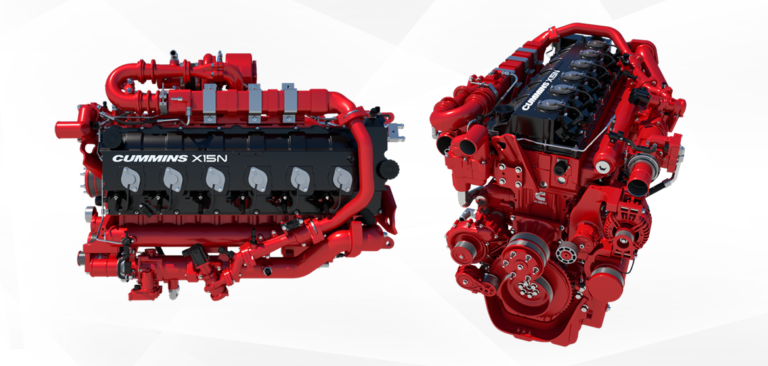Heavy-duty-engine manufacturer Cummins says it has developed a 15-liter natural gas engine for trucks, the introduction of which it sees as an important part of a wider strategy to reduce the emissions of its products.
“Cummins continues to expand our portfolio of power solutions options so customers can meet their business goals and operational objectives, while also meeting emissions standards and achieving their sustainability goals,” said Srikanth Padmanabhan, president, engine business at Cummins.
“We believe this natural gas option is a game-changer as a cost-competitive power option to existing diesel powertrains in heavy-duty trucking, making it a great complement to reduce CO2 emissions. The launch of our universal 15-liter platform for heavy-duty ensures a full range of natural gas powertrains that are available to meet the emission reduction goals of all customers and end markets.
“Equally exciting is that this engine is also the basis for the recently announced hydrogen internal combustion engine currently being tested that we are developing. Cummins continues to broaden our range of power solutions to help our customers succeed and help them transition seamlessly to the cleanest and most efficient options.”
The 15-liter engine will be offered with ratings up to 500hp and 1,850 ft-lb of torque and is expected to weigh 500 lb less than comparable 15-liter diesel engines currently available on the market, while also not requiring selective catalytic reduction (SCR) to meet 2024 California or Environmental Protection Agency emission standards.
“Cummins is committed to providing customers the right powertrain for their application,” said Brett Merritt, VP of On-Highway Engine Business, Cummins. “We are bringing this to our customers who have been asking for a natural gas option for long-haul trucking and we are bringing them a very cost-effective and efficient option. This engine will not only deliver the excellent performance characteristics that customers expect from Cummins, but also a compelling total cost of ownership experience, coupled with a potential carbon-negative powertrain option when powered with renewable natural gas.”
When powered with renewable natural gas (RNG), using methane collected from organic waste as the primary fuel source, the system can be credited with a neutral to negative carbon index, resulting in net greenhouse gas (GHG) emissions at or below zero.


